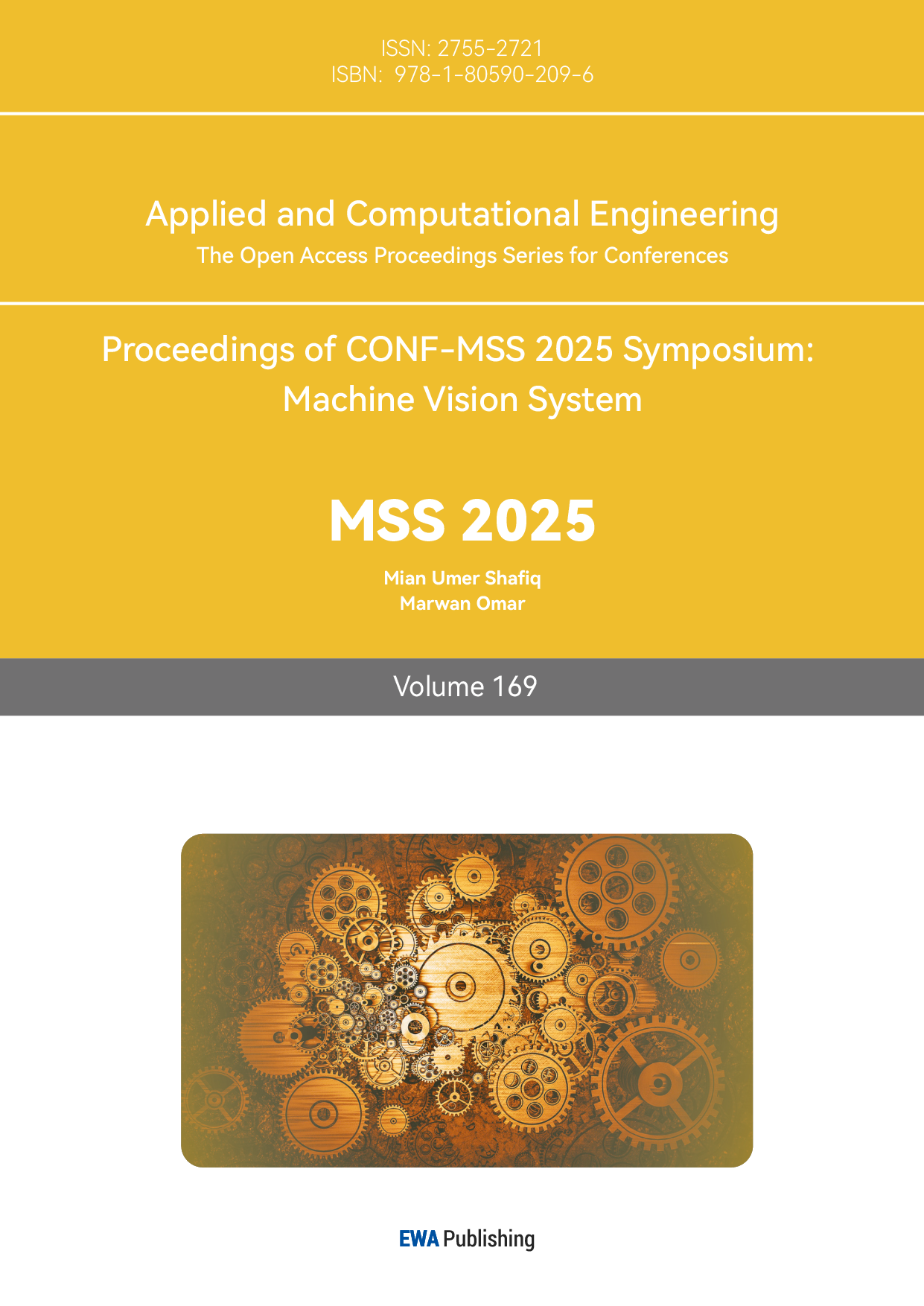References
[1]. Liu, H., et al., Study on electromechanical coupling inherent vibration characteristics and parameter influencing law of EMT system used in HEV. Proceedings of the Institution of Mechanical Engineers Part D-Journal of Automobile Engineering, 2025. 239(1): p. 351-372.
[2]. Sabri, M.F.M., K.A. Danapalasingam, and M.F. Rahmat, A review on hybrid electric vehicles architecture and energy management strategies. Renewable & Sustainable Energy Reviews, 2016. 53: p. 1433-1442.
[3]. Xiao, B., et al., A review of pivotal energy management strategies for extended range electric vehicles. Renewable & Sustainable Energy Reviews, 2021. 149.
[4]. Ko, J., et al., Development of Brake System and Regenerative Braking Cooperative Control Algorithm for Automatic-Transmission-Based Hybrid Electric Vehicles. Ieee Transactions on Vehicular Technology, 2015. 64(2): p. 431-440.
[5]. Enang, W. and C. Bannister, Modelling and control of hybrid electric vehicles (A comprehensive review). Renewable & Sustainable Energy Reviews, 2017. 74: p. 1210-1239.
[6]. Kim, S. and S.B. Choi, Cooperative Control of Drive Motor and Clutch for Gear Shift of Hybrid Electric Vehicles With Dual-Clutch Transmission. Ieee-Asme Transactions on Mechatronics, 2020. 25(3): p. 1578-1588.
[7]. Larsson, V., L. Johannesson, and B. Egardt, Analytic Solutions to the Dynamic Programming Subproblem in Hybrid Vehicle Energy Management. Ieee Transactions on Vehicular Technology, 2015. 64(4): p. 1458-1467.
[8]. Tang, X.L., et al., Double Deep Reinforcement Learning-Based Energy Management for a Parallel Hybrid Electric Vehicle With Engine Start-Stop Strategy. Ieee Transactions on Transportation Electrification, 2022. 8(1): p. 1376 1388.
[9]. Yue, H., et al., Configurations and control strategies of hybrid powertrain systems. Energies, 2023. 16(2): p. 725.
[10]. Di Cairano, S., et al. Engine power smoothing energy management strategy for a series hybrid electric vehicle. in Proceedings of the 2011 American control conference. 2011. IEEE.
[11]. Di Cairano, S., et al., Stochastic MPC With Learning for Driver-Predictive Vehicle Control and its Application to HEV Energy Management. Ieee Transactions on Control Systems Technology, 2014. 22(3): p. 1018-1031.
[12]. Zeng, Y.P., et al., A Control Strategy for Driving Mode Switches of Plug-in Hybrid Electric Vehicles. Sustainability, 2018. 10(11).
[13]. Zhang, W. and J. Xu, Advanced lightweight materials for Automobiles: A review. Materials & Design, 2022. 221: p. 110994.
[14]. Mallick, P.K., Materials, design and manufacturing for lightweight vehicles. 2020: Woodhead publishing.
[15]. Lesch, C., N. Kwiaton, and F.B. Klose, Advanced High Strength Steels (AHSS) for Automotive Applications Tailored Properties by Smart Microstructural Adjustments. Steel Research International, 2017. 88(10).
[16]. Ahmad, H., et al. A review of carbon fiber materials in automotive industry. in IOP Conference Series: Materials Science and Engineering. 2020. IOP Publishing.
[17]. Schweighofer, B., K.M. Raab, and G. Brasseur, Modeling of high power automotive batteries by the use of an automated test system. Ieee Transactions on Instrumentation and Measurement, 2003. 52(4): p. 1087-1091.
[18]. Chaturvedi, N.A., et al., Algorithms for Advanced Battery-Management Systems MODELING, ESTIMATION, AND CONTROL CHALLENGES FOR LITHIUM-ION BATTERIES. Ieee Control Systems Magazine, 2010. 30(3): p. 49-68.
[19]. Wang, J.J., et al., Review on multi-power sources dynamic coordinated control of hybrid electric vehicle during driving mode transition process. International Journal of Energy Research, 2020. 44(8): p. 6128-6148.
[20]. Mohseni, N.A., N. Bayati, and T. Ebel, Energy management strategies of hybrid electric vehicles: A comparative review. Iet Smart Grid, 2024. 7(3): p. 191-220.
[21]. Qi, Y., et al., MODEL PREDICTIVE COORDINATED CONTROL FOR DUAL-MODE POWER-SPLIT HYBRID ELECTRIC VEHICLE. International Journal of Automotive Technology, 2018. 19(2): p. 345-358.
[22]. Shi, D.H., et al., Analysis and Optimization of Transient Mode Switching Behavior for Power Split Hybrid Electric Vehicle with Clutch Collaboration. Automotive Innovation, 2024. 7(1): p. 150-165.
[23]. Hong, J., et al., ENGINE SPEED REGULATION DURING GEAR SHIFT PROCESS OF TORQUE DECOUPLED HEV USING TRIPLE-STEP NONLINEAR METHOD. International Journal of Automotive Technology, 2021. 22(2): p. 415-428
[24]. Lin, Y.P., et al., Torque coordination control strategy in engine starting process for a single motor hybrid electric vehicle. International Journal of Electric and Hybrid Vehicles, 2018. 10(2): p. 177-196.
[25]. Peng, J.K., H.W. He, and R. Xiong, Rule based energy management strategy for a series-parallel plug-in hybrid electric bus optimized by dynamic programming. Applied Energy, 2017. 185: p. 1633-1643.
[26]. Ramadan, H.S., M. Becherif, and F. Claude, Energy Management Improvement of Hybrid Electric Vehicles via Combined GPS/Rule-Based Methodology. Ieee Transactions on Automation Science and Engineering, 2017. 14(2): p. 586-597.
[27]. Zeng, Y.P., et al., Energy Management for Plug-In Hybrid Electric Vehicle Based on Adaptive Simplified-ECMS. Sustainability, 2018. 10(6)
[28]. Maino, C., et al., Optimal mesh discretization of the dynamic programming for hybrid electric vehicles. Applied Energy, 2021. 292.
[29]. Zhang, J.Y. and T.L. Shen, Real-Time Fuel Economy Optimization With Nonlinear MPC for PHEVs. Ieee Transactions on Control Systems Technology, 2016. 24(6): p. 2167-2175.
[30]. Guo, L.X., et al., Predictive energy management strategy of dual-mode hybrid electric vehicles combining dynamic coordination control and simultaneous power distribution. Energy, 2023. 263.
[31]. Hu, Y., et al., Energy Management Strategy for a Hybrid Electric Vehicle Based on Deep Reinforcement Learning. Applied Sciences-Basel, 2018. 8(2).
[32]. Liu, T., et al., Reinforcement Learning Optimized Look-Ahead Energy Management of a Parallel Hybrid Electric Vehicle. Ieee-Asme Transactions on Mechatronics, 2017. 22(4): p. 1497-1507.
[33]. Zou, Y., et al., Reinforcement learning-based real-time energy management for a hybrid tracked vehicle. Applied energy, 2016. 171: p. 372-382.
[34]. Yang, N.K., et al., Reinforcement learning-based real-time intelligent energy management for hybrid electric vehicles in a model predictive control framework*. Energy, 2023. 270.
[35]. Zhao, P., et al. A deep reinforcement learning framework for optimizing fuel economy of hybrid electric vehicles. in 2018 23rd Asia and South Pacific design automation conference (ASP-DAC). 2018. IEEE.
[36]. Han, X., et al., Energy management based on reinforcement learning with double deep Q-learning for a hybrid electric tracked vehicle. Applied Energy, 2019. 254: p. 113708.



